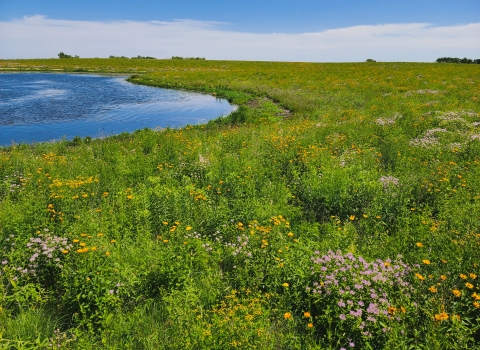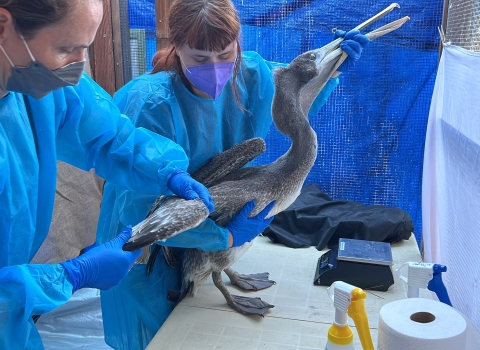DENVER -The U.S. Fish and Wildlife Service (Service) announced today the availability of the final Grizzly Bear Recovery Plan Supplement: Habitat-Based Recovery Criteria for the Northern Continental Divide Ecosystem(Recovery Plan Supplement). The final Recovery Plan Supplement provides objective, habitat-based criteria for the recovery of Northern Continental Divide Ecosystem grizzly bears, and builds upon the existing roadmap to grizzly bear recovery for the Service and our conservation partners.
The final Recovery Plan Supplement applies only to the Northern Continental Divide Ecosystem population of grizzlies, and the habitat-based criteria only impact the public federal lands within the recovery zone. Click here to view the Recovery Zone Map. The criteria are discrete, measurable, unique to the ecosystem, supported by the best available science, and are directly related to grizzly bear population health. They were initially developed in concert with our state and federal partners in the draft 2013 Conservation Strategy. To ensure that these criteria used the best available science, the Service sought public input on a December 2017 draft Recovery Plan Supplement, held public workshops to solicit input in July 2016 and January 2018, and solicited three scientific peer reviewers prior to finalizing.
Three-quarters of the bear’s habitat is found on federal lands managed by the Forest Service and the Park Service. Coordination across multiple federal, state, and tribal interests is essential for Northern Continental Divide Ecosystem grizzly bear recovery. The Service has and will continue to offer government-to-government consultations with federally-recognized Native American tribes on issues related to the Northern Continental Divide Ecosystem grizzly bear. Tribes have a tremendous amount of traditional ecological knowledge and scientific information to contribute to this matter.
The grizzly bear was originally listed as a threatened species in the lower-48 states in 1975. In 1993, a revised Grizzly Bear Recovery Plan was approved by the Service. It identified distinct recovery zones for six grizzly bear populations, including the Northern Continental Divide Ecosystem, and set out guidance for the Service, states, federal agencies, and other partners on methods to minimize threats to the species.
The goal of the Service’s grizzly bear recovery effort is to ensure the long-term existence of a grizzly bear population in all areas where a viable population can be sustained in the lower-48 states. The habitat-based recovery criteria will also inform the Northern Continental Divide Ecosystem Grizzly Bear Conservation Strategy, the guide for coordinated management of the bear after it is recovered and removed from the list of threatened and endangered species.
The mission of the U.S. Fish and Wildlife Service is working with others to conserve, protect, and enhance fish, wildlife, plants, and their habitats for the continuing benefit of the American people. We are both a leader and trusted partner in fish and wildlife conservation, known for our scientific excellence, stewardship of lands and natural resources, dedicated professionals, and commitment to public service.
Connect with our Facebook page at http://www.facebook.com/USFWSMountainPrairie, follow our tweets at http://twitter.com/USFWSMtnPrairie, watch our YouTube Channel at http://www.youtube.com/usfws and download photos from our Flickr page at http://www.flickr.com/photos/usfwsmtnprairie/.


